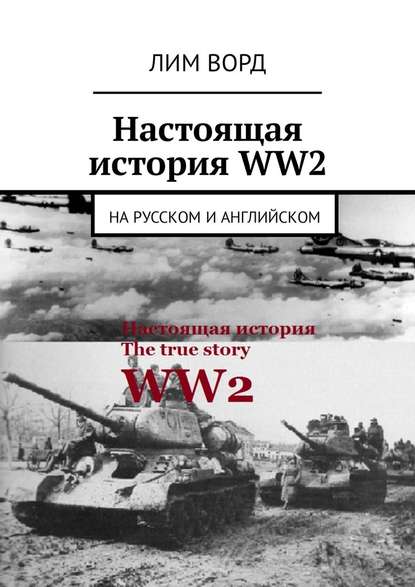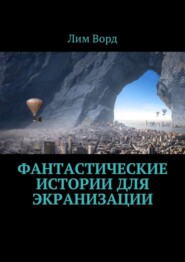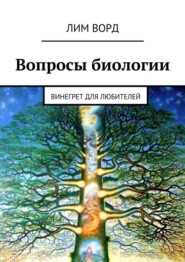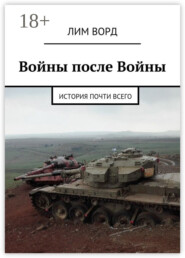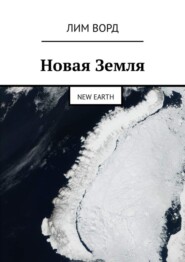По всем вопросам обращайтесь на: info@litportal.ru
(©) 2003-2024.
✖
Настоящая история WW2. На русском и английском
Настройки чтения
Размер шрифта
Высота строк
Поля
Returned back, became a world-class pilot, on the ship «Normandy», by coincidence, with the legend of the screen Marlene Dietrich, a German and American actress. Chkalov gives her bouquets of flowers, provides signs of attention, etc., up to the point where a steady rumor of a novel arises.
One thing is clear: such things as «soft power», records simply for the sake of records are often much more important for the security of the country than piles of expensive weapons and loud statements that «we will all beat you,» or: «Our friends – only the Army and Navy». The ANT-25 voyage contributed a lot to the creation of a favorable atmosphere for solving the issue of large-scale Lend-Lease deliveries in the critical year 1941 – without which, perhaps, the USSR would have lost the war.
After this, the Nationalists deploy an offensive in the North of Spain (the province of Asturias). Francists – 40 000 people, 100 units of armored vehicles, 250 aircraft, 250 guns, Republicans – 40 000 fighters, several self-made tanks, 20 aircraft, 80 guns. Nationalists apply their technique and human resources skillfully, without unnecessary losses, and achieve success. Their losses – 10 000 killed, against 30 000 irrevocable human losses of the enemy. But most importantly – the Republicans do not work the economy. The Communist leveling is negatively perceived by both farmers and highly skilled workers, not to mention the nominal owners of enterprises. Peasants do not care who levies from them an increased rent for land – landlords or bearers of bright ideals. Working committees eat government loans, hold rallies on any occasion, do not produce weapons for the army, preferring to him any useful, quickly sold goods. The salary of a militia fighter is 10 pesetas (plus food). In 1937, food prices rose sharply, albeit unevenly in different regions of the country. Kilogram of beef in Madrid costs 5, 75 pesetas, a dozen eggs 3.75, but also for these prices set by the republican government, it is almost impossible to «get it».
To top it off, the disappointed USSR and France recall their best military specialists. In the ranks of Republicans reign defeatism.
In the spring of 1938, a major offensive of the Francoists in the north-east of the country takes place. Italian air squadrons bomb Barcelona, the provisional capital of the Republic, capture part of the autonomous Catalonia, then turn to the south and cut the territory of the Republicans in half. In June, the nationalists are trying to develop success in the south, in Valencia, but run into a well-prepared line of defense, and bear significant losses.
At the end of November, Franco agrees that German companies will own 75% of the extractive industry capital in Spain and 100% in the colonies; after which Germany resumes large-scale military supplies. The republic also purchases equipment in the USSR on preferential terms, but France, after the Munich agreement, no longer wants to enter into a conflict with the Nazis, and stops military cargo on its border.
The Franco Armed Forces – 340,000 men, 300 tanks, 500 aircraft, are against the demoralized, badly armed 200,000-strong army of the Republic in Catalonia. Republicans do not accept the fight, they already have no bright ideals and interbrigades, along with 280 thousand civilian refugees they go to France.
After this, the nationalists without resistance occupy the remaining quarter of Spain. And, on April 1, dictator Franco declares the end of the civil war.
Irrevocable losses of the parties: francists (nationalists) – 130 000 people, Republicans – 320 000.
In addition, Spain loses 510 tons of gold reserves, settling in the USSR (declaring to the Spaniards much later that it was spent on them).
On the side of the Republicans fought about 2,000 volunteers – pilots, tankmen, sailors and military advisers. In battles and from various incidents, 189 people died, 56 received the title of Hero of the Soviet Union. General Pavlov (Pablo) experienced «cleansing», defined the task of creating an exclusively caterpillar tank with a powerful large-caliber (simply – long-barreled) gun, but later, as the commander of the Western Front, swept between the broken armies and divisions, in 1941, was shot. Generals produced 22 pilots, 7 of them in the coming years were repressed. Unfortunately, their idea of replacing the unstable many cadets I-15 (and also the I-16 and the «Seagull») with a new class fighter, was perceived as alarmism, and the proper response from the supreme leadership was not found immediately. In addition, the practical The experience of the confrontation of the Spanish pilots with German aircraft, as always in this system, is strictly classified, and there is no influence on the course of combat training in the Soviet Air Force.
Mikhail Svetlov (Sheinkman) in 1926 wrote the poems «Grenada», put to music by composers of 20 countries, which became a hymn to the interbrigades, since 1956 – a cult Soviet, or rather folk song. The song is good, but, perhaps, in its minor mood, it programmed the fall of the Spanish Republic. The idea that the death of one fighter does not mean anything, the detachment of this loss simply will not notice, does not attach, if you think about it, a positive. Won not the states for which the little man should give everything, but those who are ready to sacrifice much for their citizen.
At the same time, the fascist march, the unofficial German hymn «Horst Wessel» («Banners upwards»), clearly possessing some spiritual power, shows that, they say, then their troops notice the loss of fighters, and they are invisibly marching in the ranks of the surviving storm troopers. The Republican cry – «No pasarаn!» – «They will not pass» is also, definitely, passive. Nationalists replace him with their less known, but more active: "?Pasaremos!» – «We will pass.» In the end, four days before the end of the war, dictator Francisco Franco proclaims something that is very difficult to object: «Hemos pasado» – «We have passed.»
As part of the interbrigade fought, was, among other things, George Orwell (Arthur Blair). In his famous works «1984» and «Animal Farm», he, not without bitterness, shows the degeneration of revolutionary principles, a totalitarian system based on universal fear, enslavement and denunciation.
Francis lives until 1975, after which the post of the head of the country is occupied by King Juan Carlos. The country passes to parliamentarism and constitutional monarchy.
…In March 1938 there was an anschluss, otherwise, annexation, annexation of Austria. Previously, the state apparatus of this country is full of officials receiving a second salary from Germany and pursuing the corresponding policy; At the decisive moment they give the command not to resist the invasion. As a result of the «blindfold war», without losses, the Reich receives an additional 17%, territories and 6.7 million people, as well as 1.4 billion marks in currency and gold reserves. Austria becomes an administrative unit, called «Ostmark».
After the «Munich Collusion» with one of the centers of power in Europe, Great Britain and Germany, Sudetes with all defensive structures, populated by 90% ethnic Germans, and then all of Czechoslovakia are transferred. Poland does not want to miss Soviet aircraft to help the Czech Republic. Resistance is rendered only by one garrison, with the commander of which the higher authorities did not manage to contact in time: twenty-four German soldiers were killed and wounded during a forty-minute battle. In addition to 3.5 million ethnic Germans, Germany receives Skoda factories and six hundred fully ready-to-use, fairly good 38 tanks at that time (25 mm armor, 37 mm cannon, suspension close to the Christie system). England returns to the occupied country (hence, already Germany), taken out before that for storage of gold reserves – 1.4 billion marks. Slovakia becomes an independent state after it transfers southern territories to Germany’s ally, Hungary, 87% inhabited by the Hungarians. At the height of the Sudeten crisis, Poland enters its troops in the Teshinsky region, which belongs to Czechoslovakia, where 80,000 Poles and 120,000 Czechs live.
1. Czech tank 38 (t)
2. Japanese fighter Ki-27
3. BT-7
4. Ha-Guo, Type 95
5. ANT-40 (SB)
6. TB-3 (ANT-6)
7. Nikita Fedorovich Karatsupa
1. Quite a good Czech tank 38 (t). The «pigeon people» of Czechoslovakia never let them go against the Wehrmacht. In total, the enterprises of Skoda produced 1400 of them. The crew is 3—4 people, the forehead of the body is 25 mm high, the bottom is 12 mm., The hull is 15 mm., The forehead of the tower is 25 mm., The side of the tower is 15 mm. Weight 10 tons. Gun 37 mm, ammunition 72 shells, two machine guns, speed along the highway 48 km. h, cross-country 15 km. h, a power reserve of 230 kilometers.
2. Japanese fighter Ki-27 (in the USSR it was designated as I-97). Armament: two 7.7 mm. a machine gun with 500 cartridges per barrel. The speed of the earth is 395 km. h, at an altitude of 444 km. h. The range of flight is 627 km. From 1938 to 1942 produced 3,400 units.
3. BT-7. Armament: 45 mm. gun, 172 shells, one or two machine guns 7.62 (paired with a gun and aft). Booking: forehead housing 22 mm., Board 15 mm. (plus an outer layer of 4 mm.), the forehead, the side of the tower 15 mm. The speed is 72 km. h on wheels, 52 km. h on the tracks. Power reserve, 460 km. and 375 km. respectively, Crew 3 people. Weight 14 tons. Specific power 28 hp, ground pressure 0,85 kg. see (caterpillars). When driving on wheels, the front pair of rollers becomes controllable, the rear pair driving. Crawler – the steering wheel is removed, the drive from the transmission is sent to the «stars», the control goes to the levers. The destruction of rubber bands – after about 100 km. mileage. The tank performed well in Khalkin-Gol, mediocrely – in the Winter War, differing in the worst side of the T-26 by its high fuel consumption, the noisiness, the complexity of the double drive. In the Great Patriotic War with varying success was used until 1942, after almost universally transferred to educational units. The last participation of BT-7 in military operations – the defeat of the Kwantung Army, 1945. From 1935 to 1940, 5330 vehicles were produced.
4. Ha-Guo, Type 95. Japanese light tank. Armament: 37 mm. gun, 75 shells, two 6.5 mm. machine gun. Booking: the forehead, the side of the body 12 mm., The forehead, the side of the tower 12 mm. speed on the highway 45 km. h, cross-country 25 km. h. Cruising range, respectively: 250 and 210 km. Crew of 3 people. Weight 7.5 tons. Specific power 16 hp, ground pressure 0,66 kg. See Manufactured 2300 machines.
5. ANT-40 (SB). High-speed (medium) front-line bomber, development of design bureau of AN Tupolev. Armament: four 7, 62 mm. machine gun ShKAS, 600 kg. bombs. Speed: maximum 450 km. h, cruising 375 km. h. The range is 2300 km. The crew is three people. Due to a fairly successful design, it was manufactured under license in pre-war Czechoslovakia: after annexation, all aircraft were placed at the disposal of the Reich and its satellites. Operated since 1936 in Spain, the Republican troops, where it was called «Katyusha» and (at the disposal of the francists) «Sofia», also in the Khalkin-Gol, in the Winter, Great Patriotic War.
Most of the Security Council was destroyed in the first weeks of the Great Patriotic War; In addition, the lack of armor protection for the crew and vital units, and the lack of training of the flight crew, were reflected. Further, the ANT-40 was used as night bombers, to transport saboteurs to the rear of the enemy, as well as various kinds of cargo; ammunition, food, mail, etc. 6656 units were produced.
6. TB-3 (ANT-6). Soviet heavy bomber. Armament: from 4 to 8 7.62 mm. Degtyarev’s machine guns, the bomb load – normal 2000 kg of bombs, the maximum – 5000 kg. The speed of the land is 200 km. h, at an altitude of 180 km. h. The chassis are not retracted. The flight range is 3100 kilometers. The crew of 6—8 people. Successfully applied in the battles on Khalkin Gol, for their intended purpose, day and night, with the Soviet air force in the air, also for the evacuation of the wounded (15—20 people aboard), the delivery of goods. In the Winter War proved to be mediocre. It made up 25% of the Bomb Air Force by June 22, 1941, was based deep in the rear, so it almost did not suffer from Luftwaffe attacks. When daytime bombing targets carried heavy losses, but as a night bomber proved to be the best side. The Red Army was used up to the Battle of the Kursk Bulge. From 1932 to 1938, 818 vehicles were produced, completely ANT-6 was decommissioned in 1946.
7. One of the characteristic persons of the Stalin era – border guard Nikita Fedorovich Karatsupa, Hero of the Soviet Union. Birth – the village of Alekseevka, Zaporozhye region, Ukraine. Detained 338 violators of the state border. Personally, he destroyed «129 spies and saboteurs who did not lay down their arms.» In essence, this «right man» is a maniac killer of hundreds of unarmed Russian peasants who fled the Soviet regime and the GULAG abroad, possibly trying to explain the essence of their situation to the military detainee, but not receiving any response other than smirking or bullets.
Armed conflict between Japan and the USSR in Halkin Gol
In the Japanese version, with Russian transcription, it sounds like «Nomon-khan jiken» – «The incident with Nomon Khan,» by the name of one of the local heights. Some historians consider fights at the river Halkin-Gol the Second Russian-Japanese war.
Since the twenties of last century Mongolia is a protectorate of the USSR and, nominally – a socialist country. Attacks on it are already considered a matter of the Soviet Union. Therefore, when in May 1939 militaristic Japan, unhappy with the demarcation of the border with the Mongolian People’s Republic, attacks Mongolian outposts near Lake Khasan, according to the Protocol on Mutual Assistance of March 12, 1936, the Red Army interferes.
Ground-based battles along the river Halkin Gol, considered by the Japanese as the «right» border with their puppet state on the territory of China («above» Korea and more than three times), are conducted with varying success. The main events unfold in the air. Since May 22, for two days the Soviet fighter regiment is losing 22 I-15s, the Japanese – one. On an urgent basis, the pilots who showed up in Spain, as well as the newest I-16 and Chaika fighters, are called to the place of the conflict. From June 22 to June 28, the Japanese Air Force lost 90 aircraft, the Soviet Air Force lost 38 aircraft.
Since July 2, the Japanese ground group is moving into a large-scale offensive near Mount Bayan-Tsagan. In the battles participate up to 400 tanks and 300 aircraft from both sides at a time. Soviet troops quickly commanded by G. Zhukov. He manages to rectify the situation, although L. Beria sends the 1st rank commissioner L. Mehlis (a serial killer of the higher officers of the Red Army) to «check» the commander of the group of troops. The army commander’s psyche is stronger.
The Japanese side is losing 9,000 killed, almost all tanks and most of the artillery.
At the end of July, the intensity of military operations on the ground is declining. Again, fighting is in the air. Japan loses 67 aircraft, the USSR – 20. This is a prelude to a decisive blow by Soviet and Mongolian troops on August 20. The forces of the parties: the USSR-Mongolia – 30 thousand people, 500 tanks, 580 aircraft. Japan – 20 thousand fighters, 120 tanks, 450 aircraft. The army of the country of the Rising Sun is surrounded, crushed and destroyed. The day of the truce, on September 15, is crowned with an impressive air battle – 207 Soviet aircraft against 120 Japanese. Finally, «de jure», the conflict ends in May 1942; the parties find a compromise on the basis of some geographic map found in the archives.
Losses of the parties: the USSR – irretrievable losses of 10 thousand people, 250 tanks, 210 aircraft. Japan and the Union of Manchukuo, according to the averaged data – 36 thousand people, 300 tanks, 400 aircraft.
The Soviet-Finnish War of 1939—1940
Ideas of Great Finland, uniting the peoples of the Finnish-Ugric group; Finns, Karelians, Estonians, from the Gulf of Bothnia to the Ural Mountains, are spreading with the separation of Finland proper from Russia in 1918. The Government of Suomi sends a petition to the warring Germany; conclude a Brest peace with the condition of joining Finland (an ally of the Austro-German Empire), East Karelia.
In the course of their own civil war, on April 29, 1918, the White Finns capture Vyborg, arrange the genocide of all people who do not speak Finnish (retired military, schoolboys in Russian uniforms, even Poles). Three thousand people die.
On May 15, 1918, the Finnish government declared war on Soviet Russia. Its troops occupy, in particular, the Russian, from the 16th century, Pechenga, rename the name of this village in «Petsamo». Later, large deposits of nickel ore will be explored here, since 1935 their industrial development by Anglo-American corporations will begin.
The Finnish military partially block Petrograd, contributing to the first great famine in this city (according to averaged data, one hundred thousand people become victims of it, as well as «red» terror). At the rate of Mannerheim, a plan for «national uprisings» is being developed, Finnish instructors are being allocated to create centers of insurgency. However, the plans of the Field Marshal to conquer East Karelia, the Kola Peninsula, the offensive against Petrograd, Germany does not support. After the Vyborg tragedy, any joint operations to overthrow the Bolshevik government along with the Finns, the White Army refuses to conduct either.
By May 1920, parts of the Red Army were eliminating the puppet North-Karelian state. In October of the same year, Finland and the USSR signed the Tartous Peace Treaty, according to which Russia was losing part of its territories. However, in 1921 Helsinki unleashed the second Soviet-Finnish war, by forces of «forest partisans» committing acts of sabotage and killing of supporters of Soviet power. The fighting ends in March 1922, a document is signed to ensure the inviolability of the Soviet-Finnish border. About 30,000 people dissatisfied with the new order go to Finland and, up to the end of the 1920s, armed groups formed from them, make raids on Soviet territory.
Whatever it was, the mood in Finland does not seem friendly to the Soviet government. His proposal – the removal of the border from Leningrad at the expense of Finland, in exchange for twice the size of the areas of East Karelia. Rent of the island of Hanko to create a Soviet military base. Disarmament and demolition of the «Mannerheim Line» on the Karelian Isthmus. Finland rejects these conditions.
Military operations begin after the delivery of an ultimatum, on November 30, 1939, from shelling (ships of the Baltic Fleet) and the bombing of Helsinki. The Soviet Union is excluded from the League of Nations. European countries supply Suomi with weapons, including free of charge (350 aircraft, 500 guns) and volunteers. For two months the columns of Soviet troops advancing along the forest roads are being cut by Finnish skiers, surrounded and destroyed. This is no longer the Halkin Gol. In February, having saturated the troops with heavy artillery and tanks, having increased the norms of food allowance, the USSR is making progress in the breakthrough of the Mannerheim Line; On March 13, Soviet troops enter Vyborg. The world lies. Irrevocable, severe losses of the USSR – 130 000 people, 650 tanks, 640 aircraft; Finns – 26 000 people, with 450 000 refugees, 62 aircraft. From the Finnish captivity, 4,354 people return, and are being filtered by the NKGB GUGB. 450 of them are released, the rest receive from 5 to 8 years of camps.
This military operation could have a special meaning if the USSR kept Petsamo (Pechenga) with the reserves of nickel ore, much needed by Germany’s military industry. However, the international community, including, above all, the UK, is strongly opposed. The area Petsamo returns to the Finns, and they organize a large-scale supply of nickel to the Axis countries.
Pechenga will join the Russian Federation only in 1944.





